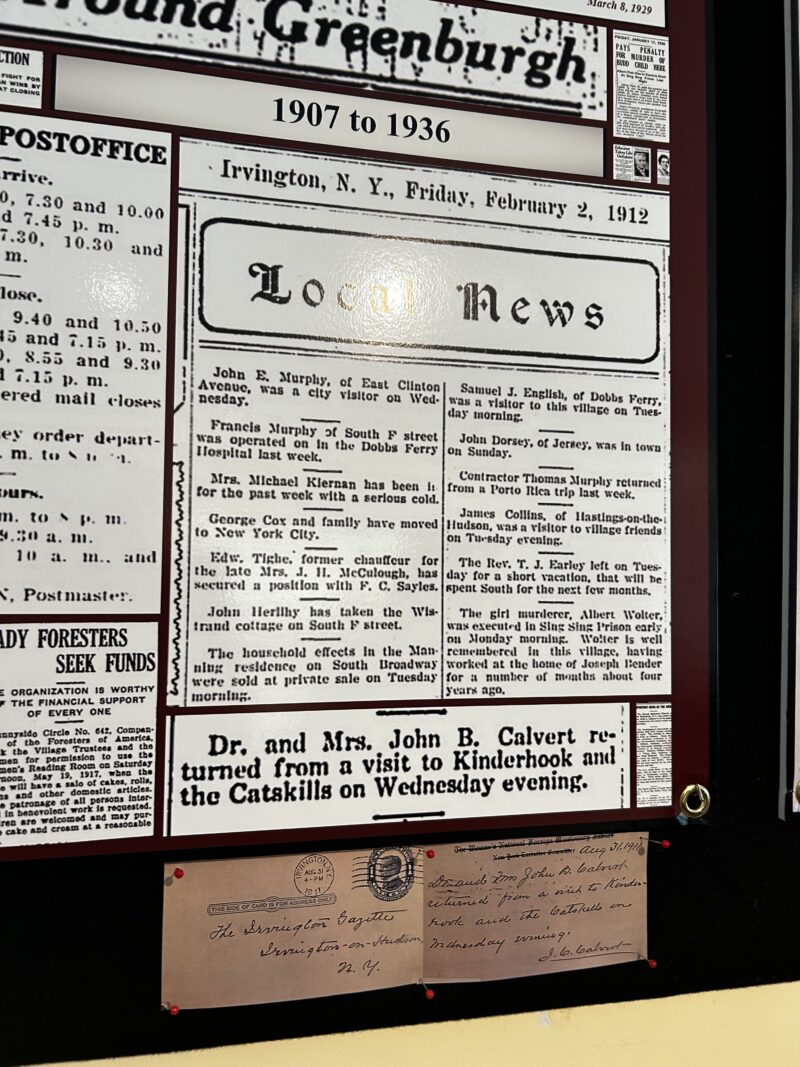Tarrytown Trustees Pave Way for Battery Energy Storage System – thehudsonindependent.com

Report on Tarrytown’s Approval of Battery Energy Storage Systems and Alignment with Sustainable Development Goals
Executive Summary
On July 21, 2025, the Tarrytown Board of Trustees unanimously approved a zoning code amendment to permit the development of Battery Energy Storage Systems (BESS). This decision enables Catalyze Tarrytown to advance its proposal for a Tesla megapack energy grid. The resolution reflects a strategic commitment to advancing several United Nations Sustainable Development Goals (SDGs), particularly in the areas of clean energy, sustainable infrastructure, and climate action, while balancing community safety and economic considerations.
Legislative Action and Project Details
The Board of Trustees’ action on July 21 represents a critical step in modernizing the village’s energy infrastructure. Key details of the decision include:
- Vote: A unanimous 6-0 decision to amend the village Zoning Code.
- Outcome: The amendment permits BESS in designated locations, paving the way for the Catalyze Tarrytown project at 120 White Plains Road to proceed to the Planning Board for site plan review.
- Regulatory Framework: The amendment is based on a February 24 recommendation from the Planning Board, which established a floating/overlay zone for BESS projects meeting specific criteria, such as a four-acre minimum lot size and setback requirements.
Contribution to Sustainable Development Goals (SDGs)
The approval of BESS aligns directly with several key SDGs, positioning Tarrytown as a participant in the global transition to sustainable energy.
SDG 7: Affordable and Clean Energy & SDG 13: Climate Action
The project is a significant local contribution to achieving clean energy and climate goals.
- Enhancing Clean Energy: BESS technology is fundamental to supporting SDG 7 by stabilizing the electrical grid. This allows for greater integration of intermittent renewable energy sources, such as solar and wind, reducing reliance on fossil fuels.
- Promoting Climate Action: By facilitating a shift to renewables, the project directly supports SDG 13. The Board of Trustees noted the project’s consistency with New York State’s Climate Protection and Leadership Act, a key policy for statewide climate action.
- Improving Affordability: Catalyze Tarrytown representatives stated the BESS would help manage energy supply during peak demand, which can lead to lower and more stable energy costs for consumers, a core target of SDG 7.
SDG 9: Industry, Innovation, and Infrastructure & SDG 11: Sustainable Cities and Communities
The initiative strengthens local infrastructure and promotes sustainable community development.
- Building Resilient Infrastructure: The installation of a Tesla megapack represents an investment in innovative technology and resilient infrastructure, a primary goal of SDG 9.
- Fostering Sustainable Communities: The zoning amendment is an act of forward-looking urban planning that supports SDG 11. The Board affirmed that the BESS development is consistent with the village’s and Westchester County’s Comprehensive Plans for sustainable growth.
Stakeholder Perspectives and Risk Mitigation
The decision-making process involved a comprehensive review of stakeholder input, reflecting a commitment to SDG 17: Partnerships for the Goals. The Board balanced competing interests to arrive at a decision.
- Proponents: Mayor Karen Brown, citing the need to “follow science,” and various environmental advocates supported the zoning change, highlighting its alignment with sustainability objectives.
- Opponents: Local fire officials, including Chiefs Patrick Derivan and Raymond Tuohy, repeatedly voiced strong opposition due to significant safety concerns, stating the “benefit doesn’t outweigh the reward.”
- Board’s Response: While respecting the fire department’s concerns, the Board moved forward, committing to robust safety protocols to mitigate risks. Mayor Brown stated, “We will make sure to fully equip it with equipment in the event something may happen,” addressing the safety and resilience component of SDG 11.
Conditions for Final Approval and Future Governance
To ensure the project’s safe and beneficial integration into the community, the Board of Trustees has mandated several conditions that must be met if the project receives final approval.
- Financial Contribution: A contract for payment in lieu of taxes (PILOT) will be required from Catalyze Tarrytown, ensuring the project contributes to the municipal tax base.
- Emergency Preparedness: In a direct response to safety concerns, the resolution mandates annual, site-specific, and system-specific training for the Tarrytown fire and police departments. This condition directly enhances community safety and resilience, a key target of SDG 11.
Analysis of SDGs, Targets, and Indicators
1. Which SDGs are addressed or connected to the issues highlighted in the article?
-
SDG 7: Affordable and Clean Energy
The article focuses on the approval of a Battery Energy Storage System (BESS), which is a key technology for modernizing the energy grid. The project aims to “benefit consumers by helping during peak use and lowering costs,” directly addressing the goal of providing reliable and affordable energy. The use of a “Tesla megapack energy grid” represents an investment in cleaner energy infrastructure.
-
SDG 9: Industry, Innovation, and Infrastructure
The installation of a BESS is an upgrade to local infrastructure, making it more resilient and sustainable. The project involves innovative technology (“Tesla megapack”) to improve the energy grid, which aligns with the goal of building resilient infrastructure and fostering innovation.
-
SDG 11: Sustainable Cities and Communities
The decision-making process described in the article, involving the “Tarrytown Board of Trustees,” the “Planning Board,” and amendments to the “village’s Zoning Code,” is central to sustainable urban planning. The article notes the development is consistent with the “village’s Comprehensive Plan.” Furthermore, addressing safety concerns of the fire department and requiring “site-specific and system-specific training” contributes to making the community safer and more resilient.
-
SDG 13: Climate Action
The article explicitly links the BESS project to climate policy, stating that its development is “consistent with… the goals of New York State’s Climate Protection and Leadership Act.” This demonstrates the integration of climate change measures into local planning and strategies, which is a core component of SDG 13.
2. What specific targets under those SDGs can be identified based on the article’s content?
-
SDG 7 Targets:
- Target 7.1: By 2030, ensure universal access to affordable, reliable and modern energy services. The project’s stated benefit of “helping during peak use and lowering costs” directly supports this target by improving energy reliability and affordability for consumers.
- Target 7.a: By 2030, enhance international cooperation to facilitate access to clean energy research and technology… and promote investment in energy infrastructure and clean energy technology. The project to “install a Tesla megapack energy grid” is a direct investment in clean energy technology and infrastructure at the local level.
-
SDG 9 Targets:
- Target 9.1: Develop quality, reliable, sustainable and resilient infrastructure… to support economic development and human well-being. The BESS project is a development of resilient energy infrastructure designed to improve the reliability of the power supply.
- Target 9.4: By 2030, upgrade infrastructure and retrofit industries to make them sustainable… with greater adoption of clean and environmentally sound technologies. The BESS represents an upgrade to existing energy infrastructure using a cleaner, more sustainable technology.
-
SDG 11 Targets:
- Target 11.3: By 2030, enhance inclusive and sustainable urbanization and capacity for participatory, integrated and sustainable human settlement planning and management. The process involved amending the “village’s Zoning Code” based on recommendations from the “Planning Board” and in line with the “village’s Comprehensive Plan,” which exemplifies integrated and sustainable settlement planning.
- Target 11.b: By 2020, substantially increase the number of cities and human settlements adopting and implementing integrated policies and plans towards inclusion, resource efficiency, mitigation and adaptation to climate change, resilience to disasters. The village’s decision is aligned with the state’s “Climate Protection and Leadership Act” and includes provisions for disaster resilience, such as requiring safety training for the fire and police departments.
-
SDG 13 Targets:
- Target 13.2: Integrate climate change measures into national policies, strategies and planning. The article shows this target being implemented at a local level, as the Board of Trustees explicitly stated the BESS project is “consistent with… the goals of New York State’s Climate Protection and Leadership Act.”
3. Are there any indicators mentioned or implied in the article that can be used to measure progress towards the identified targets?
-
Indicators for SDG 7:
- Implied Indicator for Target 7.1: Improved reliability of the power supply. This can be measured by tracking reductions in power outages or fluctuations during peak demand periods after the BESS is operational. The article implies this by mentioning the system will help “during peak use.”
- Indicator for Target 7.a: Investment in clean energy technology. The approval and subsequent installation of the “Tesla megapack energy grid” serves as a direct indicator of investment in this area.
-
Indicators for SDG 9:
- Indicator for Target 9.1: Development of sustainable and resilient infrastructure. The primary indicator is the successful implementation of the Battery Energy Storage System project itself.
-
Indicators for SDG 11:
- Indicator for Target 11.3: Adoption of sustainable urban planning policies. The “unanimous vote… to amend the village’s Zoning Code to permit Battery Energy Storage Systems (BESS)” is a concrete indicator of a change in planning policy.
- Indicator for Target 11.b: Implementation of disaster resilience plans. The requirement that “any resolution must include conditions for the fire department and police department site-specific and system-specific training on an annual basis” is a specific, measurable indicator of progress in building local resilience to potential hazards associated with the new infrastructure.
-
Indicators for SDG 13:
- Indicator for Target 13.2: Integration of climate policy into local planning. The formal determination by the Board of Trustees that “the development of BESS was consistent with… the goals of New York State’s Climate Protection and Leadership Act” is a clear indicator of policy integration.
4. Summary Table of SDGs, Targets, and Indicators
| SDGs | Targets | Indicators Identified in Article |
|---|---|---|
| SDG 7: Affordable and Clean Energy |
7.1: Ensure access to affordable, reliable, modern energy.
7.a: Promote investment in clean energy technology and infrastructure. |
– Improved energy reliability during peak use. – Lower energy costs for consumers. – The installation of a “Tesla megapack energy grid” as an investment in clean energy infrastructure. |
| SDG 9: Industry, Innovation and Infrastructure |
9.1: Develop quality, reliable, sustainable and resilient infrastructure.
9.4: Upgrade infrastructure to make it sustainable with clean technologies. |
– The successful construction and operation of the Battery Energy Storage System. – Adoption of BESS technology as an upgrade to the local energy grid. |
| SDG 11: Sustainable Cities and Communities |
11.3: Enhance inclusive and sustainable urbanization and planning.
11.b: Implement integrated policies and plans for climate change mitigation and disaster resilience. |
– The amendment of the “village’s Zoning Code” to permit BESS. – The requirement for annual “site-specific and system-specific training” for the fire and police departments. |
| SDG 13: Climate Action | 13.2: Integrate climate change measures into national policies, strategies and planning. | – The official determination that the BESS project is consistent with the “New York State’s Climate Protection and Leadership Act.” |
Source: thehudsonindependent.com

What is Your Reaction?
 Like
0
Like
0
 Dislike
0
Dislike
0
 Love
0
Love
0
 Funny
0
Funny
0
 Angry
0
Angry
0
 Sad
0
Sad
0
 Wow
0
Wow
0













































































